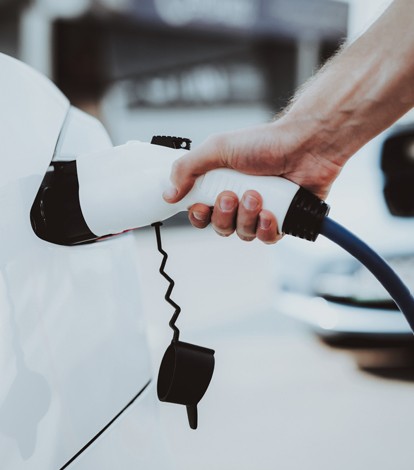

Today, there are more electric vehicle manufacturers than ever before, and they are becoming more available to the average consumer. With the increase in the number of cars manufactured, the question of charging speed and the differences between the types of electric chargers becomes more prevalent. Lack of understanding of the features and differences between the types of electric vehicle chargers, could cause you not to enjoy the benefits of using the suitable charger.
This blog will go over charging times and the differences between different types of electric vehicle chargers
Electric vehicle charging time
The time it takes to charge your electric vehicle is mostly determined by the size and condition of the battery and if the charging power is low or full. Most electric vehicles' battery size impacts how long it takes to charge them. The larger the battery, the longer the charging time and longer the driving distance. In addition, the type of charger and the maximum charging speed should be considered.
Because electric vehicle chargers come with varied connectors and charging speeds, which use either direct current "DC" or alternating current "AC" with low or high power utilization, the charging time is also dependent on the charging station's power source.
There are two types of charging stations
House charging stations and public charging stations. A house charging station or house charger provides enough power for a normal commute. High-speed public charging stations are suitable for long-distance travel. Therefore, it is necessary to ensure the maximum charge power of the car from AC and DC and the maximum charge power of the charging station. Example: If the maximum charge of an electric vehicle is 11 kW, the maximum charge cannot be reached with a 7 kW charger. Conversely, if your car has a maximum charge of 7 kW, it will not charge you faster with a 22 kW charger.

Types of electric vehicle charger
DC "Rapid charger"
Mode 4
This type is the latest development in fast charging technology for electric vehicles, and this type is often used at highway gas stations and some public parking lots.
The most important question is, how long does it take this type to charge the electric vehicle?
Depending on the power of the charging station, it ranges from about 30 minutes to an hour, and ranges from 24 kW to 360,000 kW.
The rapid charger has a cable connected to a charger that can be used to charge electric vehicles without needing your personal cable.
AC "Fast Charger"
Mode 3
Like the WallBox charger, this type charges at an average speed of 7-22 kWh. So, the charging time of an electric vehicle is 4-6 hours. If the battery capacity is 88 kilowatts and the charger is 22 kilowatts, then the charging time is around 4 hours considering that the car can accept up to 22kWh.
AC "Slow Charger"
Mode 2
The portable charging cable that comes with the purchase of an electric vehicle is the slowest type of electric vehicle charger. It has a top speed of 3 kilowatts and takes about 24 hours to charge an electric vehicle.
The power supply you need to install the charger at house
When installing the charger for your electric vehicle at house, you have the option of selecting a single phase or three phase chargers. However, your choice depends on other factors, such as the specifications of your vehicle and the electrical wiring in your house. The charging speed within your house is determined by the electricity connected, whether 110V or 220V per phase.
Considering supply voltage of 220V phase to neutral, there are 2 options for the charger:
Single Phase:
Power flows from only 1 conductor
Three Phase:
Power flows from 3 conductors
The biggest difference between the 2 types is the charging speed, whereas the second one is characterized by a better energy transfer capability and charges with a capacity of 22 kWh, while the first is slower and charges with a capacity of only 7 kWh.
Considering supply voltage of 110V phase to neutral, you are going to install a single phase charger connected to a second line rather than the neutral, that is comparable to 220V single phase in terms of slow charging.
Therefore, before buying an electric vehicle charger, ensure its specifications and check the highest charging capability and its compliance with the electricity of your house.
Types of electric vehicle charger plugs
Plug for DC “Rapid charger”
There are more than 2 types of plugs available, depending on the country and manufacturer. For Saudi we consider 2 types only: CHAdeMO and CCS2 ,Both types are approved for use in the Kingdom of Saudi Arabia.

Plug for AC "Fast Charger"
Type 1:
Mostly used in the United States.
Type 2:
The most popular type approved for use in the KSA.
Tesla charger plug:
It is often supplied with an adapter to comply with the country standard. Type 2 EU for AC and CCS2 for DC.


